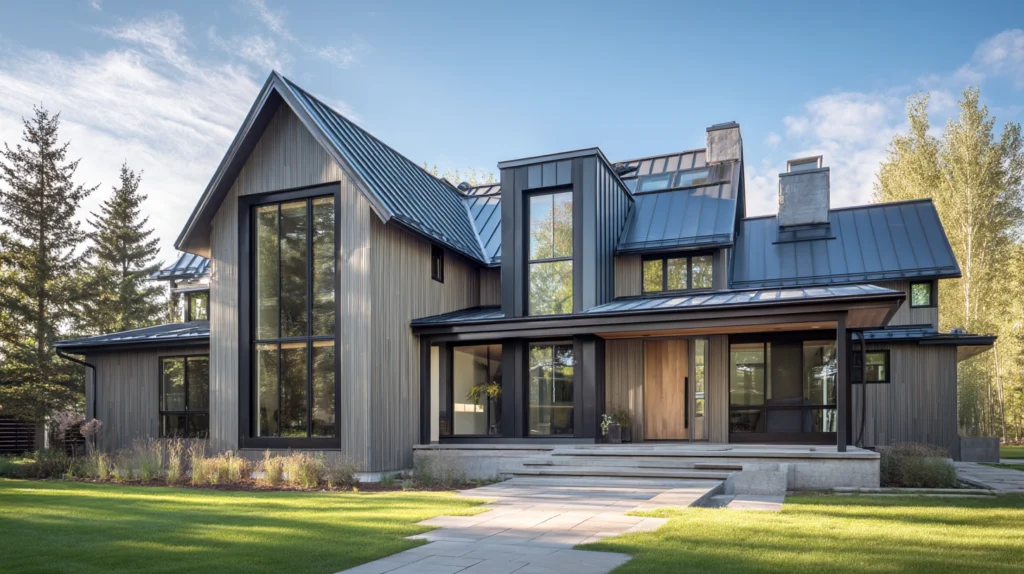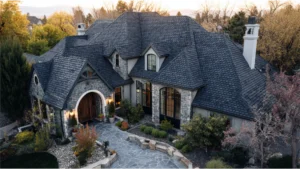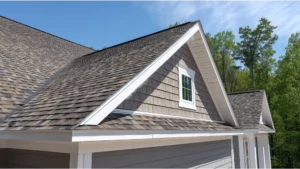When homeowners compare a standing seam metal roof vs corrugated metal roofing, many factors influence the decision. Metal roofing is an increasingly popular alternative to asphalt shingles because it offers superior durability, energy efficiency, and longevity. In this article we examine corrugated metal roofing, standing seam metal roof, and how to decide the best fit for your home.
Metal roofing, whether standing seam roofs or corrugated metal systems, is not a one‑size‑fits‑all solution. You’ll see comparisons of standing seam panels, flat metal panels, corrugated metal roofing panels, corrugated panels, metal panels, and more. We’ll explain key differences in installation costs, maintenance, weather resistance, and more, so you as a homeowner can make a confident decision.
What Are the Main Types of Metal Roofing?
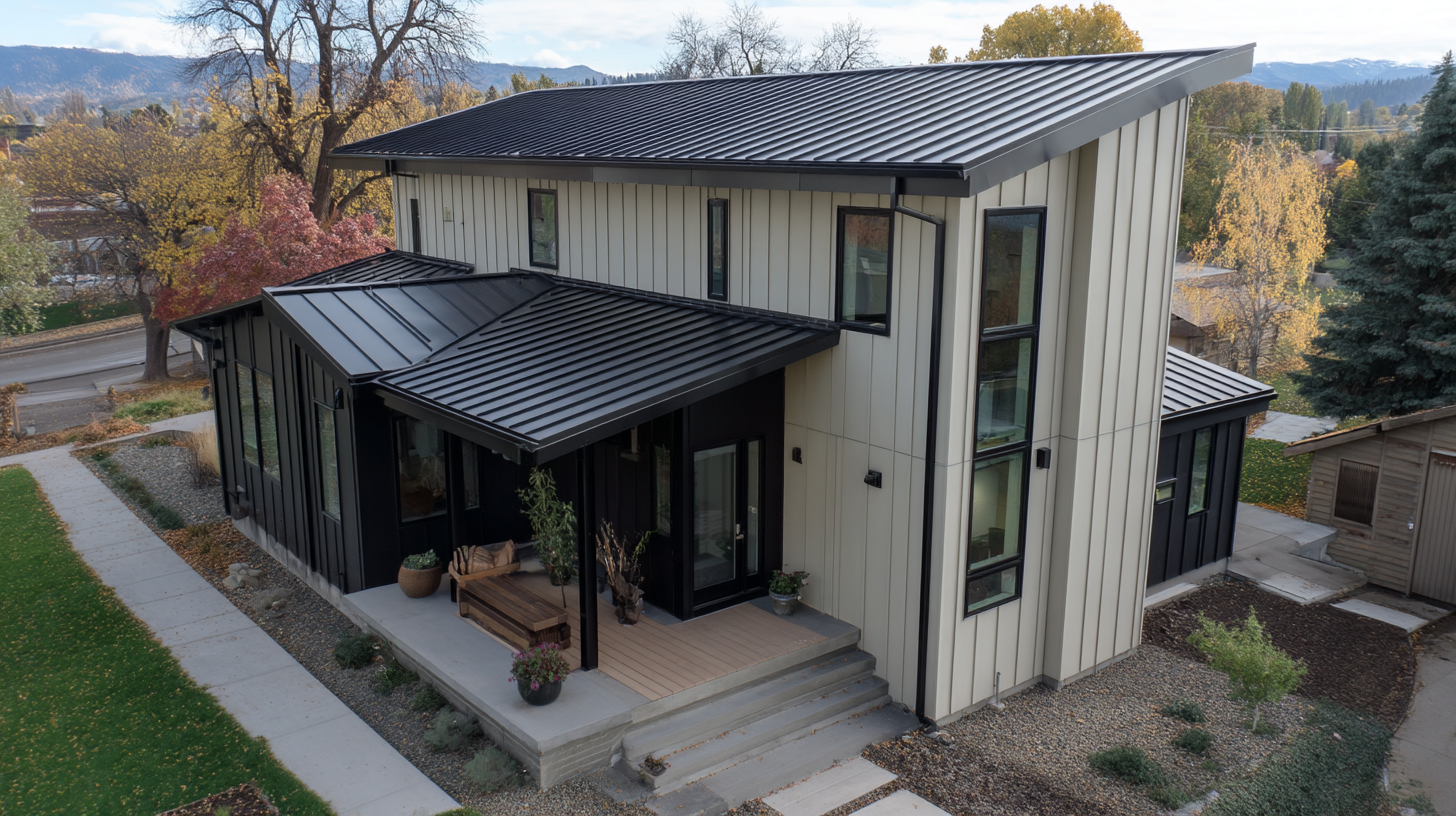
In general, the two dominant metal roofing types for residential homes are standing seam and corrugated metal roofing. Let’s define each:
Corrugated Metal Roofing / Corrugated Panels
Corrugated metal roofing uses corrugated metal panels, also simply called corrugated panels. They consist of roll formed metal sheets with repetitive ridges and valleys. The wavy profile gives structural stability, allowing the panels to span across roof deck supports. However, these panels use exposed fasteners (visible screws through the panels) to secure them to the roof deck, which makes them more vulnerable to water infiltration over time if not installed correctly.
Corrugated roofing is often lower cost, simpler to install, and favored by budget conscious homeowners. It also complements a rustic or industrial aesthetic, though it lacks the sleek, refined lines of premium systems.
Standing Seam Metal Roof / Standing Seam Roofs
A standing seam metal roof uses standing seam panels that interlock with raised seams (vertical legs) that run continuously from the eave to the ridge. A key feature is that the system uses concealed fasteners or hidden fasteners rather than exposed screws, reducing potential leak points. The exterior shows clean flat surfaces with no visible fasteners, giving a modern appearance and aesthetic appeal.
Because the joints are sealed and fasteners are hidden, standing seam systems are more robust against wind uplift, heavy rain, and other stresses. When installed correctly by a qualified contractor, standing seam offers less maintenance, superior durability, and better long‑term value compared to corrugated alternatives.
Key Differences: Standing Seam vs Corrugated
Below are the key differences between standing seam and corrugated metal roofing systems across several performance categories.
Fasteners and Leak Resistance
Corrugated systems use visible fasteners that penetrate through the metal and into the roof deck. Each fastener typically uses a washer or seal, but with time thermal cycling, washer degradation, or loosening, water can infiltrate. Thus corrugated roofing is more prone to leaks if not carefully maintained.
Standing seam roofing uses concealed fasteners or hidden clips that attach under the standing seam panels. Because no screws pass through the panel surface, there are fewer stress points and less chance of direct water penetration into the roofing system. This leads to better long‑term resistance to leaks and water infiltration.
Durability, Weather Resistance, and Lifespan
One of the strongest arguments for standing seam metal roof systems is their longevity. With galvanized steel or aluminum substrates and quality finishes, standing seam roofs can last 40 to 70 years or more. They are built to handle severe weather, high winds, hail, and heavy rain.
In contrast, corrugated metal roofing systems tend to have shorter useful lifespans, often in the 25 to 45 year range, because of vulnerabilities at fasteners, overlaps, and seams. Corrugated panels are more susceptible to degradation, corrosion, and fatigue over time, especially in harsh climates.
Maintenance Requirements
Because standing seam uses hidden fasteners and continuous interlocked seams, it generally demands less maintenance. Occasional inspections and surface cleaning are usually sufficient.
Corrugated systems require more regular upkeep: you must inspect and tighten screws, replace washers or sealants, check overlaps, and watch for rust or corrosion around fasteners. That means more maintenance over the life of the roof.
Aesthetic Appeal and Visual Impact
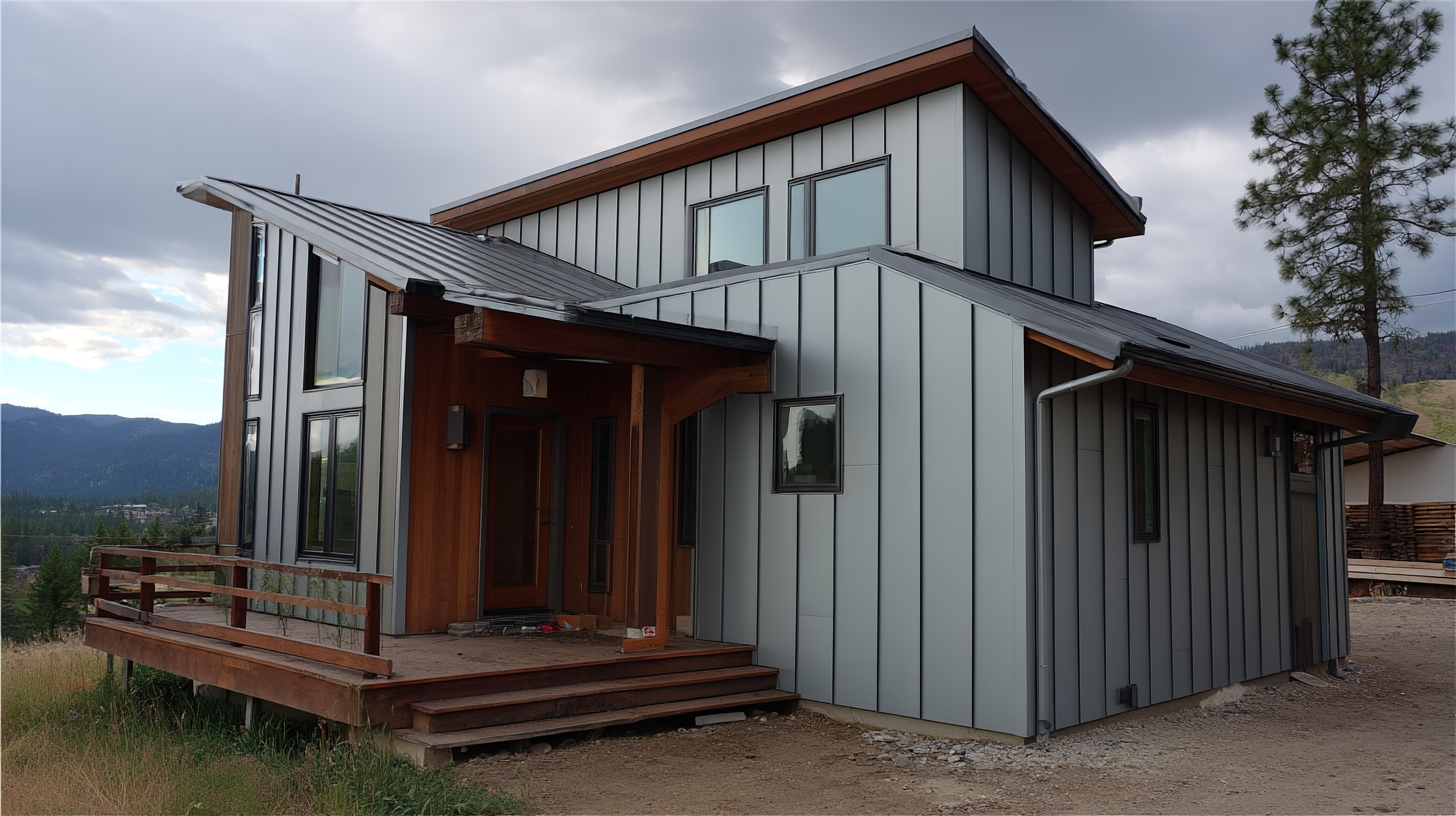
Standing seam roofs deliver clean, unbroken lines of flat metal panels, giving a modern appearance and high-end curb appeal. Their sleek lines are often preferred by homeowners seeking a premium look.
Corrugated metal roofing has a pronounced wavy texture that calls more attention to the metal profile. This industrial or barn-style look can be appropriate in certain settings, but it rarely delivers the refined aesthetic of a seamless standing seam roof.
Performance in Rain, Wind, and Climate
Standing seam systems are better at handling heavy rain, high winds, and severe weather when properly engineered. The sealed, continuous seams and hidden fasteners help the roof system resist uplift and water intrusion.
Corrugated systems perform well when installed on steeper slopes, allowing water to run off quickly. But under more demanding conditions or lower slopes, corrugated roofs may struggle with water infiltration or fastener stresses.
Energy Efficiency and Cooling Costs
Metal roofing already offers advantages over traditional roofing materials such as asphalt shingles when it comes to reflect heat and reduce heat absorption. But standing seam systems with reflective coatings or finishes further improve energy efficiency benefits. Because the flat surfaces and tight seams reduce thermal bridging, standing seam roofs may help with cooling costs in warmer climates.
Corrugated roofing also reflects solar heat but may have slightly less consistent performance because of more exposed fasteners, small gaps or overlaps, and potential air infiltration.
Installation Complexity and Labor Costs
Installing standing seam roofing is more complex and requires precision. It involves using specialized tools to roll or mechanically seam panels together, aligning seams, and using concealed clip systems. The installation process is meticulous and demands qualified contractor teams, which increases labor costs.
Corrugated roofing installation is simpler: corrugated panels are rolled, cut, and screwed down to the roof deck with visible fasteners. Many roofing crews are familiar with corrugated installs, making it more accessible and less expensive in labor.
Cost: Upfront vs Lifecycle
Upfront, a standing seam metal roof can cost 30 to 50 percent more than corrugated metal roofing because of the premium materials, fabrication, and labor. But when you factor in reduced maintenance, longer life, better performance, and higher resale value, the overall cost over decades often favors standing seam for homeowners staying long term.
Corrugated panels and systems are appealing for low cost and lower upfront investment, especially for outbuildings or budget-constrained projects. If you plan to remain in a home for just a short time, corrugated may make fiscal sense.
Choosing the Right Metal Roofing for Your Home
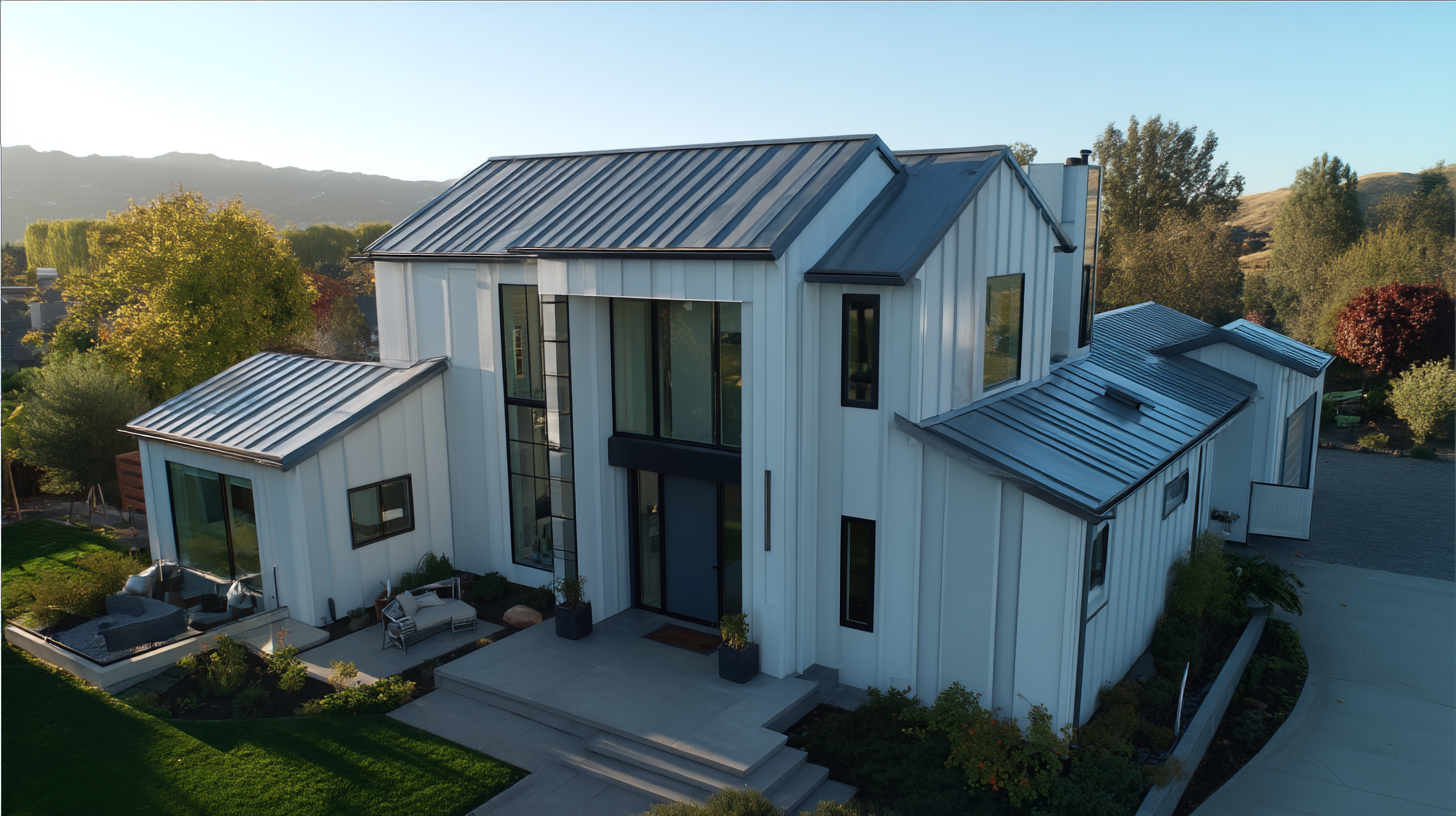
To determine whether standing seam or corrugated metal roofing is right for your home, consider these key factors:
Architectural Style and Roof Slope
If your home features modern design elements or contemporary lines, standing seam fits better thanks to its sleek, minimalist visual. It also handles flat surfaces or low slopes more reliably because of sealed seams.
If your home has a steep-pitched roof or a rustic aesthetic, corrugated metal may integrate more naturally. Just be sure the slope is sufficient to avoid water infiltration issues with overlaps.
Project Timeline and Budget
If you’re remodeling on a budget or roofing a secondary structure (garage, barn, ADU), corrugated metal roofing might make sense. It gives you durable coverage at a lower cost.
If your goal is a long‑term roof that requires minimal maintenance, standing seam metal roof can offer better value over decades.
Climate and Local Conditions
In Northern California and regions with strong sun, seasonal storms, or wildfire risk, the enhanced protection of standing seam is a strong advantage. The sealed seams and hidden fasteners help shield from heavy rains, wind, and ember exposure.
Corrugated roofing may work in milder or less extreme areas, but in zones requiring premium resilience, standing seam generally holds an edge.
Integration with Roof Attachments
Many homeowners install solar panels or other rooftop systems. Standing seam vs corrugated matters here: standing seam allows roof attachments via nonpenetrating seam clamps to the raised seams, avoiding drilling through the panel. Corrugated systems often require penetrations for mounts, which increases risk of leaks over time.
Maintenance Willingness and Resale Goals
If you prefer low upkeep and plan to stay in your home long-term, standing seam is optimal. Corrugated roofing demands more vigilance. Also, for resale, buyers often view standing seam as a premium upgrade, boosting resale value.
Material Choices and Sustainability
Both systems can use recycled materials or eco‑friendly metal substrates, but standing seam systems often feature more advanced coating technologies and longevity, giving them a sustainability advantage over time.
Real‑World Scenarios: Applying the Decision
Scenario One: Modern Home in Sacramento Area
Homeowners building or remodeling in Roseville with low-sloped roofs, solar ambitions, and desire for a clean contemporary look typically opt for standing seam metal roof. The ability to mount solar panels with nonpenetrating attachments, combined with low maintenance and superior performance, makes standing seam a natural fit.
Scenario Two: Budget‑Conscious Accessory Building or Garage
If you need to cover a detached garage or workshop with limited budget, corrugated metal roofing may suffice. The lower initial cost, simpler installation, and adequate performance in fair climates make corrugated panels a practical option for less critical structures.
Scenario Three: Hybrid Strategy
Some homeowners choose standing seam for the main house and corrugated for outbuildings. This balances premium performance where it matters most, and cost savings in less critical areas.
Addressing Common Concerns and Myths
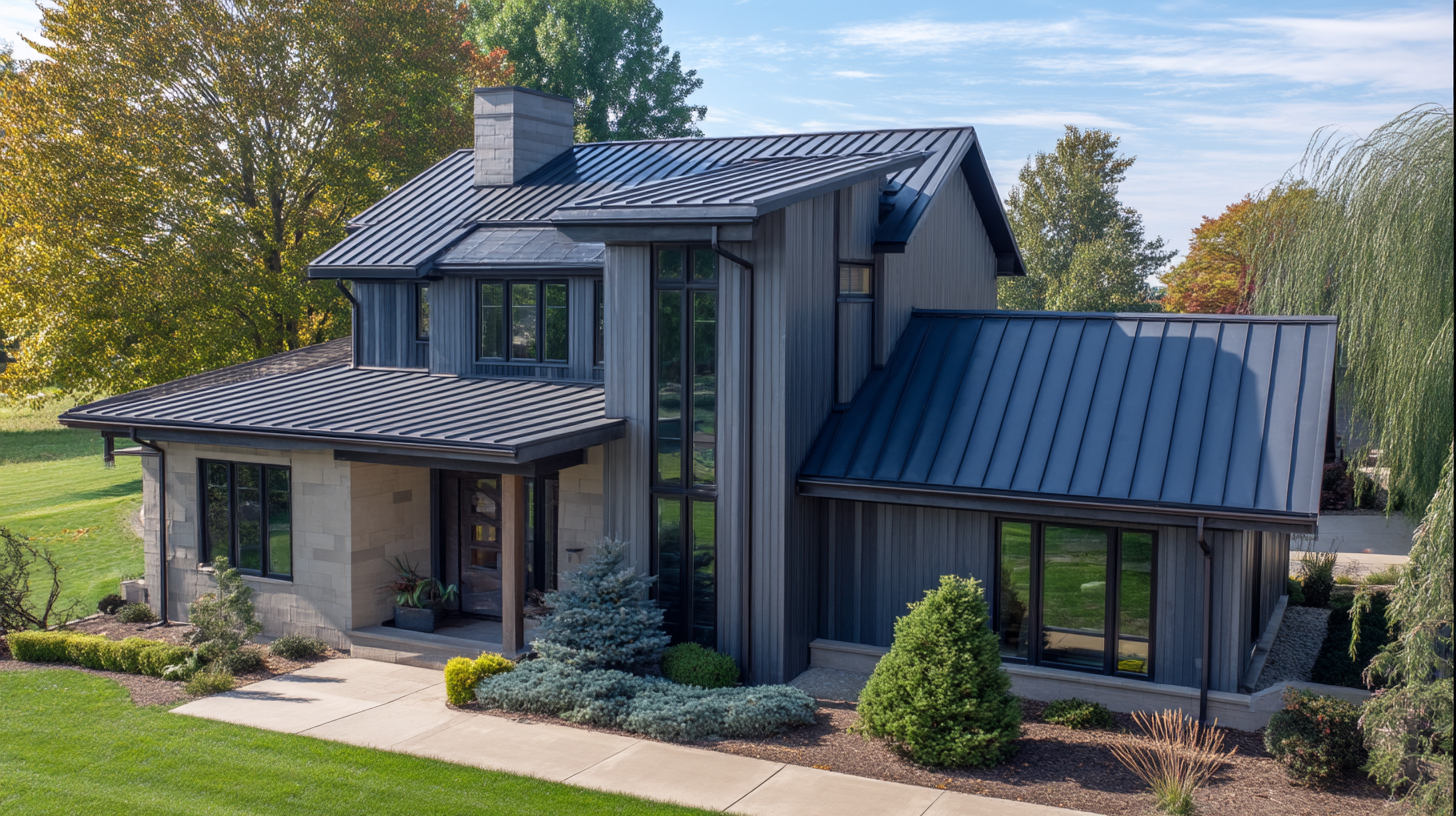
Myth: Corrugated metal will always leak more than standing seam.
Truth: If installed perfectly with quality materials, corrugated can perform well. But because of more exposed fasteners and reliance on sealants, corrugated requires more maintenance and has more risk over time.
Myth: Standing seam is only for ultra‑modern homes.
Truth: While standing seam complements modern design, it can also suit transitional or traditional homes depending on panel width, finish, and trim choices.
Myth: Corrugated is obsolete in residential roofing.
Truth: Corrugated still has its place, especially for secondary structures or budget projects. It’s not ideal everywhere, but it is not wholly obsolete.
Myth: Any contractor can install standing seam as easily as corrugated.
Truth: Installing standing seam requires experience, precision, and specialized tools. A mismatch between contractor skill and system demands can compromise performance.
Comparison Table: Standing Seam vs Corrugated Metal Roofing
| Feature | Standing Seam | Corrugated Metal Roofing |
|---|---|---|
| Fastener Type | Concealed fasteners / hidden | Exposed fasteners |
| Leak Potential | Lower | Higher if not maintained |
| Maintenance | Less maintenance | More maintenance over time |
| Aesthetic Appeal | Sleek lines, modern look | Wavy, industrial style |
| Lifespan | 40–70+ years | 25–45 years typical |
| Installation Complexity | High | Lower |
| Upfront Cost | Higher | Lower |
| Overall Cost (lifecycle) | Often better value long-term | May cost more in repairs |
| Wind & Weather Resistance | Stronger | Adequate with good design |
| Solar Integration | Seam clamps, no penetrations | May require drilling |
| Suitability for Low Slope | Excellent | Only in steep slopes |
| Resale Value | High positive impact | Moderate impact |
| Ideal Use | Whole home, premium projects | Garages, outbuildings, budget jobs |
Why Cobex Is Your Best Choice for Metal Roofing
At Cobex Construction Group, we specialize in both standing seam and corrugated metal roofing systems. We bring local Northern California expertise, licensed and insured crews, and a commitment to clean installation, quality workmanship, and lasting results.
We support you through each phase: design, material selection, structural integration, and warranty support. Whether you choose a standing seam design or corrugated panels, we ensure that the installation process is handled precisely, and your new roof offers years of reliable, beautiful performance.
We also link to other relevant services like siding, window replacement, and exterior upgrades. When you work with us, you benefit from full coordination across exterior remodeling tasks.
Frequently Asked Questions
Is standing seam worth the extra cost?
Yes. For homeowners planning to stay in their home long-term, the advantages in durability, energy savings, low maintenance, and resale value usually make standing seam metal roof worth the higher investment.
Can you install solar panels on a metal roof?
Yes. In fact, standing seam roofs are ideal for solar panels because you can use roof attachments via seam clamps without penetrating the metal surface. That preserves integrity and minimizes leak risk.
How often does corrugated metal roofing require maintenance?
You should inspect a corrugated metal roof at least once per year. Pay attention to fasteners, washers, sealants, and any signs of corrosion or loosening. Address any issues promptly to maintain performance.
Can standing seam and corrugated roofing withstand wildfire and extreme heat?
Yes. Both metal roofing styles offer strong fire resistance, especially when properly installed with class A rated underlayments. However, the sealed seams of standing seam provide better protection against ember intrusion and flashover.
Which is better for resale value: standing seam or corrugated?
A standing seam roof is typically seen by buyers as a premium upgrade. It can increase curb appeal, differentiate your home, and justify a higher resale price. Corrugated roofing still adds value over asphalt, but often less so compared to seamless systems.
Does standing seam reduce cooling costs?
Yes. Because standing seam panels provide tighter interlocking systems and often incorporate high-reflectivity coatings, they help reduce solar heat gain and improve energy efficiency. That can lead to lower cooling costs in warm climates.
What is oil canning and does it affect standing seam or corrugated?
Oil canning is a minor aesthetic waviness or distortion in flat metal panels under certain stresses or temperature changes. It tends to be more noticeable in large, flat areas. Quality engineering, proper substrate support, and choosing rigid panel designs help reduce oil canning in both systems.
Can a standing seam roof be retrofitted over asphalt shingles?
Often yes, if the roof deck structure can accommodate it. An experienced qualified contractor can evaluate framing, load, and attachment methods and safely install standing seam panels over existing roof surfaces in some cases.
Final Thoughts
When you compare standing seam metal roof vs corrugated metal roofing, the decision comes down to long-term performance, aesthetics, maintenance appetite, and budget. For a roof that delivers superior durability, low upkeep, refined appearance, and higher resale potential, standing seam metal is usually the better choice. Corrugated roofing still has value in cost-sensitive or secondary structure scenarios. No matter which option you prefer, choosing an experienced, local contractor who understands your climate and your design goals is vital.
If you’re ready to explore metal roofing options for your home, from standing seam vs corrugated to material selections and installation planning, contact Cobex Construction Group today. Let us help you make the best choice for your home and build a quality roof that lasts decades.
